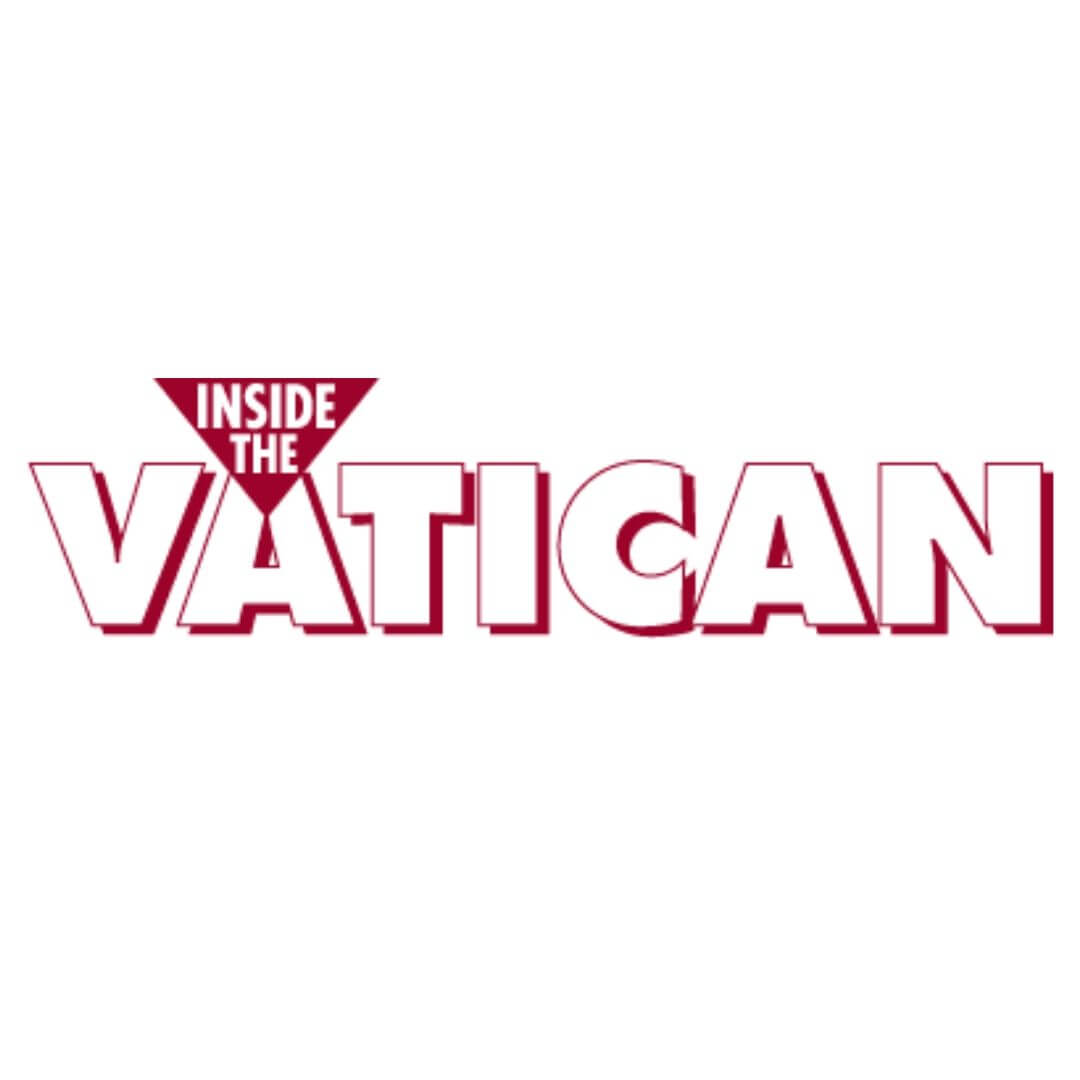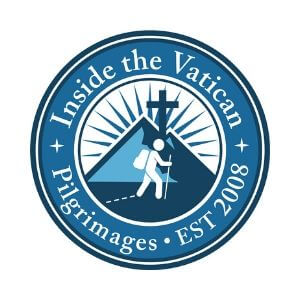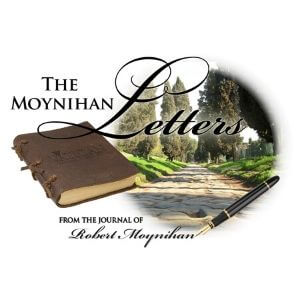“If German bishops and priests were applying and defending the principles of the Catholic faith, they would certainly find themselves in opposition to the views presented in mainstream media and politics, but this would make the Church so much more attractive to so many people, who are desperately looking for a good shepherd right now.” —A young German Catholic man named Moritz Scholtysik who is protesting the exclusion of the unvaccinated from Mass in Berlin, Germany, beginning at the end of November. He is interviewed below
Letter #166, 2021, Tuesday, December 7: In Berlin, the unvaccinated are barred from attending Mass…
The news from Berlin is profoundly troubling.
What is of greatest concern is the possible creation of two classes of Catholics, in this case, one “vaccinated” and one “unvaccinated.”
This would be unprecedented, and a terrible tragedy, and, therefore, some superior authority ought to advise the archbishop of Berlin, Heiner Koch, 67, who has taken this decision, that this measure is not in harmony with the perennial Catholic faith, as it marginalizes an entire group of Catholics, rather than embracing and nourishing them.
An important interview conducted with a number of German Catholics in Berlin by Maike Hickson of Lifesitenews (herself born in Germany)published yesterday here — and today picked up by the redoubtable Bishop Henry Gracida, 98 (born in 1923, he will turn 99 next year, he was bishop of Corpus Christi, Texas, from 1983-1997, and has a conservative Catholic blog here) — reveals a worrisome situation is developing, which could, potentially, spread widely: Berlin Catholics without proof of “vaccination” against the Covid virus, or a notice of recovery from the virus, are being — since the end of November — prevented from attending Mass and receiving the sacraments in the diocese of Berlin, the capital of Germany.
This seems not to take into scientific facts reported even by the mainstream media:
1) there are many people with various auto-immune problems who, together with their doctors, have decided it is quite unwise and imprudent for them to receive any vaccination, especially untested ones; (See this May 18 report in The Washington Post: “Vaccine makers excluded immunocompromised people from their clinical trials in an understandable rush to develop a way to protect as many people as quickly as possible. As a result, there’s limited information about how this group is reacting to the shots…”)
2) the evidence for the efficacy of these incompletely tested “vaccines” is still ambiguous; cases are now being reported of limited protection among “among older people and those with weakened immune systems” and evidence is emerging that “their protection against infection [that is, the effectiveness of the vaccines to prevent infection]… has fallen.” (See this November 11 report in the New York Times: “As tens of millions who are eligible in the United States consider signing up for a Covid-19 booster shot, a growing body of early global research shows that the vaccines authorized in the United States remain highly protective against the disease’s worst outcomes over time, with some exceptions among older people and those with weakened immune systems. But while the vaccines’ effectiveness against severe disease and hospitalization has mostly held steady, even through the summer surge of the highly transmissible Delta variant, a number of published studies show that their protection against infection, with or without symptoms, has fallen.” [Editor’s note: emphasis added]
“A desire for presence”
The Church has always believed that, even in time of plague, or when confronting diseases like leprosy, the sacraments of the Church must be made available, if at all possible, to the sick.
See this November 22 article in Church Life Journal by Timothy O’Malley entitled “Saints of the Black Death”:
“In 1374, St. Catherine experienced the plague in Siena, where she lost three siblings and other relatives. Everyone left the town as the best medical advice said. St. Catherine did not, nursing victims back to health.[11]”
And: “St. Brigid of Sweden (1303-1373) was a Swedish noblewoman, who became a third order Franciscan after the death of her husband. During the rest of her life, she would care for the sick, eventually founding a religious order dedicated to prayer and care for the poor, the Order of the Most Holy Saviour (or the Brigittines). Plague struck Sweden in 1349, as St. Brigid was on pilgrimage to Rome to seek approval for her rule. She arrived in Rome just as the plague attacked the city and the Pope himself had departed… St. Bridget does not speak about the suddenness of death… as only punishment or wrath. Rather, because death comes when we do not expect it, human beings have the freedom to make of their lives a sacrificial offering. They may live an existence of freely bestowed charity. Contingency—including plague—are part of the fall. And rather than be bitter about this, the suddenness of death becomes an occasion for deeper love or the exercise of charity.”
And: “St. Charles Borromeo was a saint who followed the example of St. Catherine and St. Bridget. Born in 1538, St. Charles was named a Cardinal of the Catholic Church in his early 20s by his uncle Pope Pius IV. St. Charles was only then ordained a deacon, called to Rome, where he was charged to enact the final session of the Council of Trent (which was continually postponed because of war and plague).[14] St. Charles was appointed Archbishop of Milan in 1564. The Archbishop of Milan typically did not reside in the city, instead living in Rome. Because of this, the Milanese Church was profoundly corrupt. Clerics had many children. They openly carried swords, functioning akin to feudal lords. It was bad enough that a saying developed in Milan, ‘If you want to go to hell, become a priest.’
“St. Charles insisted upon living in Milan, where he enacted the reforms of the Council of Trent including the education of clergy, increased promotion of lay holiness, and held regular diocesan and provincial synods. He visited every parish in his diocese, for he knew that the vocation of the bishop was to be present to his people…
“In 1576, plague descended upon Milan. At the time, St. Charles was outside the city, but he rushed home. Almost immediately, St. Charles entered the Milanese lazarettos, giving Viaticum and anointing the sick. He did so at great personal risk, against the advisement of both public officials and some of his clergy.[15] Because St. Charles knew that the Milanese needed the presence of the Lord in this time, when nearly every ward of the city was in quarantine… St. Charles… responded to the deepest of human need. A desire for presence, especially during sickness. He knew that the Church, if she was to be healed not only from plague but from the corruption internal to her clergy and lay members[17], needed to be in the presence of one another, of the sick and suffering, and of the saints… If plague is to come, then it should lead to deeper holiness, more frequent reflection on the mortality and thereby the contingency of our lives. Eucharistic participation should increase, because frequent reception is what enables us to transform our suffering and death into a space of love.” [emphasis added]
***
The Church has never believed that it is in harmony with the Christian faith to divide the members of the Church into two groups, one “pure” and able to receive the sacraments, the other “impure” and forbidden access to the sacraments. The Church is one, and must always be one, and so remain united.
This Berlin decision is a very dangerous precedent.
This matter should be addressed decisively by Rome as soon as possible. —RM
***
Also, Archbishop Viganò prepared a statement on some aspects of these matters on December 2, which was released just this afternoon, here. I will include the text in an upcoming email.
The Archdiocese of Berlin has declared that only the vaccinated or COVID-recovered faithful may attend Holy Mass
By Maike Hickson
Mon Dec 6, 2021 – 9:09 pm EST
(LifeSiteNews) – A group of some 60 Catholics – families, students, and the elderly – have shown their opposition to the new “2G” rule in the Archdiocese of Berlin that only the vaccinated or COVID-recovered faithful may attend Holy Mass. These Catholics organized a prayer vigil at Hedwig’s Cathedral, the main Catholic church in Berlin, singing, praying, and displaying a sign which read: “No 2G: Church for all.”
LifeSite interviewed Moritz Scholtysik, one of the organizers of this initiative, which was spontaneously started out of opposition to the Archdiocese of Berlin’s decision. The decision to segregate Catholics based on vaccine status was not even imposed upon the diocese by the state. Since November 27, Holy Mass on Sundays and on feast days are restricted for the unvaccinated.
“Due to this decision by the Archdiocese,” Scholtysik told LifeSite, “some faithful were already denied Mass attendance on the first Sunday of Advent. This is disastrous. According to the catechism the faithful do have a right to receive the holy sacraments. Especially in a time when we experience fear, loneliness, and isolation, the common celebration of Holy Mass is more important than ever.”
The main organizers of this prayer vigil are five mostly young Catholics from different parishes in the Archdiocese of Berlin, and they know that already many people had written letters of protest to Berlin Archbishop Heiner Koch. After the second prayer vigil yesterday, the group also published a press release (see full text below).
“We ask him [Archbishop Koch] to make the celebration of the sacraments accessible to everyone again. In the prayer vigil, therefore, we prayed a rosary for the archbishop and the entire diocese,” co-initiator Giovanni Maria Olivari said in the release.
In this interview with LifeSiteNews, Scholtysik stressed that the saints of the Catholic Church give us inspiration on how to deal with health crises such as our current one: “Yet the history of the Church gives us so many examples of saintly women and men, who were taking care of the sick despite high risks for their own health. Moreover they always put God and the souls first. Just to name two: Saint Gregory the Great and Saint Charles Borromeo did not reduce their pastoral care in the times of the pest, but even increased it, because they knew that we – above all – need God.
Please see below the full interview:
LifeSiteNews: What is your initiative?
Moritz Scholtysik: We organize prayer vigils in front of Hedwig’s Cathedral, the main Roman Catholic church in Berlin. We come together with candles and lanterns on the Sundays of Advent to sing hymns and pray the rosary for unrestricted access to church services in Berlin during Advent and Christmas. At our first and second vigil there were over 60 attendants.
How did it come that you organized this imitative?
Scholtysik: The first prayer vigil was a spontaneous reaction to the decision of the Archdiocese of Berlin to impose “2G“ restrictions on church services on Sundays and feast days as of November 27. This means that only those who have a Covid-19 vaccination or recovery certificate will be admitted to the service. Thankfully there are a few exceptions, but even they have “3G“ restrictions, which means either one is vaccinated, recovered, or has a negative antigen rapid test. It is worth mentioning that this decision was made by the Archdiocese alone, there was no rule by the local government.
Due to this decision by the Archdiocese some faithful were already denied Mass attendance on the first Sunday of Advent. This is disastrous. According to the catechism the faithful do have a right to receive the holy sacraments. Especially in a time when we experience fear, loneliness, and isolation, the common celebration of Holy Mass is more important than ever.
How many people organized this initiative? Are they young and elderly, differed age groups?
Scholtysik: We organizers are a group of five, mostly young Catholics from different parishes in the Archdiocese of Berlin. We already knew each other before these restrictions and when we talked about them, we quickly decided to organize a prayer vigil. At that time there have already been many Catholics in Berlin, who wrote e-mails to the Archdiocese to demonstrate their criticism of the new rule.
What are you hoping for with your initiative, and how long will you continue?
Scholtysik: First of all, in the prayer vigil we pray for the Archbishop Dr. Heiner Koch and the entire Archdiocese. By standing together and demonstrating unity we ask the Archbishop to make the celebration of the sacraments accessible to everyone again. We will continue with the prayer vigils during Advent and then see, how the Archdiocese will decide on the possibilities to attend Holy Mass.
However, it is likely that we will continue praying the rosary publicly regardless from the Archdiocese’s decision, because it is the most beautiful and important sign of faith in times of crisis. Furthermore we got [a] very positive response from the participants so far, which is highly encouraging for us.
How do you see the situation in Germany in general?
Scholtysik: Sadly the situation in Germany is quite heated. Most parties and members of parliament are now in favor of another lockdown and of a general vaccine mandate, although they have promised several times in the last few months, that both will not happen. Mainstream media usually does not criticize this, but actually denounces anyone who will question this unreasonable behavior. Therefore there is an increasing tension and division in society. Many people fear further restrictions of their freedom. Especially in this situation the guidance and the prayer of the church is very much needed.
What is your general assessment of how the Catholic Church in Germany has conducted herself in the corona crisis?
Scholtysik: It, of course, depends on the parish. There were many good priests and religious all over Germany taking great care of the faithful during this crisis. We are also very grateful for the bishops having prevented a second ban of the Holy Mass by the government in last year’s autumn.
Still there could have been more criticism by the hierarchy of the government and the media spreading so much fear, creating division, and driving so many people into loneliness and depression. Instead of increasing the number of holy Masses, processions, and opportunities for confession many churches were closed, Holy Communion on the tongue was prohibited, and holy water fonts were emptied.
Yet the history of the Church gives us so many examples of saintly women and men who were taking care of the sick despite high risks for their own health. Moreover they always put God and the souls first. Just to name two: Saint Gregory the Great and Saint Charles Borromeo did not reduce their pastoral care in the times of the pest, but even increased it, because they knew that we – above all – need God.
Do you see a connection between the failure of the Catholic Church in the corona crisis and the current Synodal Path that is taking place in Germany?
Scholtysik: Yes. Both developments are characterized by the desire to follow the Zeitgeist [“the spirit if the time” or “the spirit of the age”] instead of applying and defending the principles of the Catholic faith.
If German bishops and priests were doing the latter, they would certainly find themselves in opposition to the views, presented in mainstream media and politics, but this would make the Church so much more attractive to so many people, who are desperately looking for a good shepherd right now.
Below is the group’s press release:
The Faithful Demand: No 2G in Berlin’s diocese
Up to 60 participants at prayer vigils in front of Hedwig’s Cathedral in Berlin call for unrestricted access to Catholic services
Between 40 and 60 faithful gathered in front of Hedwig’s Cathedral in Berlin on the first two Sundays of Advent with the claim “No 2G: Church for All” (“Kein 2G: Kirche für alle“). Together, the privately initiated group prayed for unrestricted access to Church services during Advent and Christmas.
On November 28th and December 5th, the participants gathered at dusk with candles and lanterns, sang the Advent hymn “Macht hoch die Tür” and prayed the rosary.
The prayer vigils were a reaction to the decision of the Archdiocese of Berlin to impose 2G restrictions on church services on Sundays as of November 27. This means that only those who have a Covid-19 vaccination or recovery certificate will be admitted to the service. Even the few exceptions have 3G restrictions. Some faithful were already denied Mass attendance on the first Sunday of Advent.
Co-initiator Moritz Scholtysik explains: “This decision is disastrous. Especially in a time when we experience fear, loneliness and isolation, the common celebration of Holy Mass is more important than ever.”
“Even though there are exceptions, a great many faithful are excluded from celebrating Holy Mass. This creates even more division in the Christian community,” co-initiator Ludwig Brühl says.
“We thank Archbishop Dr. Heiner Koch for having already eased the restrictions slightly. At the same time, we ask him to make the celebration of the sacraments accessible to everyone again. In the prayer vigil, therefore, we prayed a rosary for the archbishop and the entire diocese,” co-initiator Giovanni Maria Olivari emphasizes. The prayer vigils got a very positive response from the participants. Encouraged by the common action, they wished for a continuation of public prayer.”
Dr. Maike Hickson was born and raised in Germany. She holds a PhD from the University of Hannover, Germany, after having written in Switzerland her doctoral dissertation on the history of Swiss intellectuals before and during World War II. She now lives in the U.S. and is married to Dr. Robert Hickson, and they have been blessed with two beautiful children. She is a happy housewife who likes to write articles when time permits. Hickson has closely followed the papacy of Pope Francis and the developments in the Catholic Church in Germany, and she has been writing articles on religion and politics for U.S. and European publications and websites such as LifeSiteNews, OnePeterFive, The Wanderer, Rorate Caeli, Catholicism.org, Catholic Family News, Christian Order, Notizie Pro-Vita, Corrispondenza Romana, Katholisches.info, Der Dreizehnte, Zeit-Fragen, and Westfalen-Blatt.
Note: See also the first of “The Nathanson Files” (click below).
Our Work: An Overview
We ask you to support Urbi et Orbi Communications with a small or large contribution, at this difficult time, in order…
(1) to keep Inside the Vatican Magazine (which we have published since its founding in 1993, 28 years ago) independent and comprehensive… Now available to you digitally as well as in print! Now offering Virtual Events, ITV Writer’s Chat and Reader’s Chat!
(2) to ensure that Inside the Vatican Pilgrimages can keep creating encounters.
(3) to help bring the Catholic Church and the Orthodox Churches closer together by “building bridges” through our non-profit Urbi et Orbi Communications.
(4) to sustain our occasional news and analysis emails, The Moynihan Letters, bringing valuable information and insight to thousands of readers around the world.
Please, do not overlook this opportunity to work with us. We very much appreciate your gift, whether small or large.
Thank you.
In Christ,

Dr. Robert Moynihan and the rest of the Urbi et Orbi Team









Facebook Comments